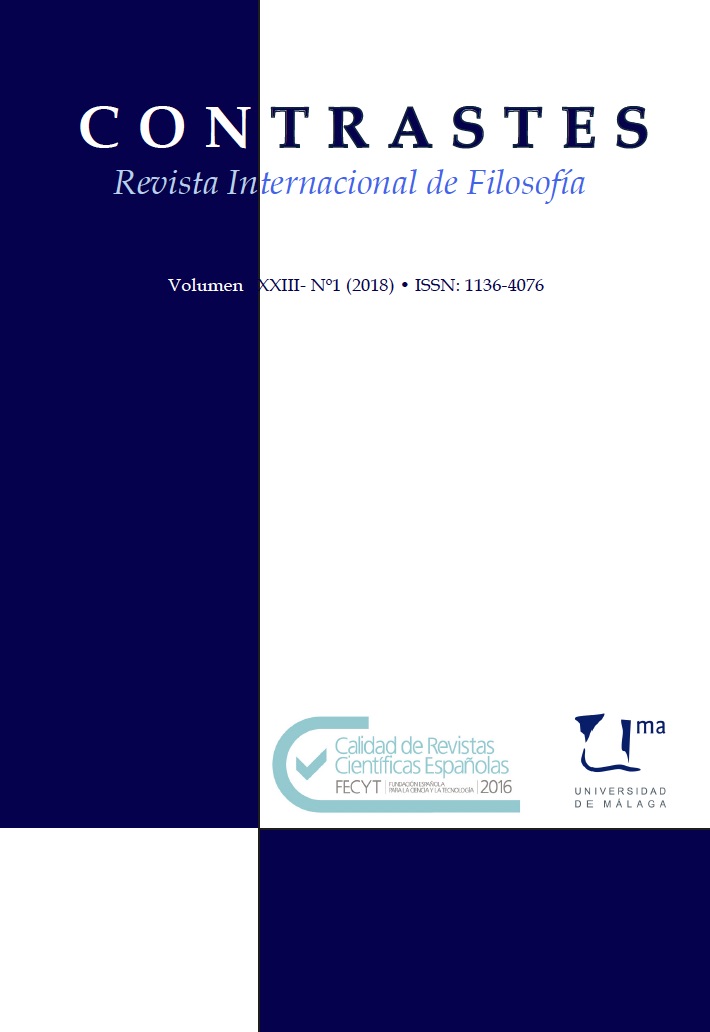The Prisioner’s Dilemma. A study of some aspects of the first tournament between computer programs by Axelrod
DOI:
https://doi.org/10.24310/Contrastescontrastes.v23i1.5460Keywords:
Prisoner's dilemma, Axelrod, Computer Tournament, Experimental philosophyAbstract
In 1981, Axelrod announced the approach and results of a tournament between computer programs by which he tried to fix what the best strategy for playing the iterated Prisoner’s Dilemma is. Each program encoded a strategy. The winning strategy, according to Axelrod, wasknown as Tit for Tat, encoded by the program submitted by Anatol Rapoport. As Axelrod’s work is experimental, it should be possible for anyone to repeat the experiment.This trial is a study of some aspects of that experiment. First, the concepts of «league tournament type» and «winner of a tournament league type». Third, the results of subjecting to analysis Table 2 of Axelrod.Perhaps the main conclusion of this study is that declaring a strategy (program) as winner should take into account not only the point of view of cooperation (minimizing mutual damage) but also the point of view of the confrontation (winning at all costs).
Downloads
Metrics
Publication Facts
Reviewer profiles N/A
Author statements
Indexed in
-
—
- Academic society
- N/A
- Publisher
- Universidad de Málaga
References
AXELROD, R. 1980: «Effective Choice in the Prisoner’s Dilemma». The Journal of Conflict Resolution, Vol. 24, No. 1, pp. 3-25.
AXELROD, R. 1980: «More Effective Choice in the Prisoner’s Dilemma». The Journal of Conflict Resolution, Vol. 24, No. 3 , pp. 379-403.
AXELROD, R. 1984: The Evolution of Cooperation. N. York: Basic Books Inc. Publisher.
AXELROD, R. 1997: The complexity of cooperation : agent-based models of competition and collaboration. Princeton (N. J.): Princeton University Press.
BINMORE, K. 2007: Game Theory. A Very Short Introduction. Oxford: Oxford U. Press.
HO, T-H. 1996: «Finite automata play repeated prisoner’s dilemma with information processing costs». Journal of Economic Dynamics and Control 20, pp. 173-207.
HOFSTADTER, D. R. 1983: «Computer tournaments of the Prisoner’s Dilemma suggest how cooperation evolves». Scientific American, Volume 248, Issue 5,
pp. 16–26.
MITCHELL, M. 2009: Complexity. A Guided Tour. N. York: Oxford University Press.
RUBINSTEIN, A. 1986: «Finite Automata Play the Repeated Prisoner’s Dilemma». Journal of Economic Theory 39, pp. 83-96.
DE SANTIAGO, R. y GARCÍA, J.A. 1994: «¿Es posible ganar a Toma-y-Daca? ». Anales de Estudios Económicos y Empresariales, Vol. 9, pp. 159-184.
SIMON, H. 1996: The Science of the Artificial. Cambridge (MA): The MIT Press.
Downloads
Published
How to Cite
Issue
Section
License
This journal provides immediate free access to its content under the principle of making research freely available to the public. All content published in Contrastes. Revista Internacional de Filosofía, are subject to the Creative Commons Attribution-NonCommercial-ShareAlike 4.0 license whose full text can be found at <http://creativecommons.org/licenses/by-nc-sa/4.0>
It is the responsibility of the authors to obtain the necessary permissions of the images that are subject to copyright.
Authors whose contributions are accepted for publication in this journal will retain the non-exclusive right to use their contributions for academic, research and educational purposes, including self-archiving or repository in open access repositories of any kind.
The electronic edition of this magazine is edited by the Editorial Service of the University of Malaga (Uma Editorial), being necessary to cite the origin in any partial or total reproduction.










5.png)
